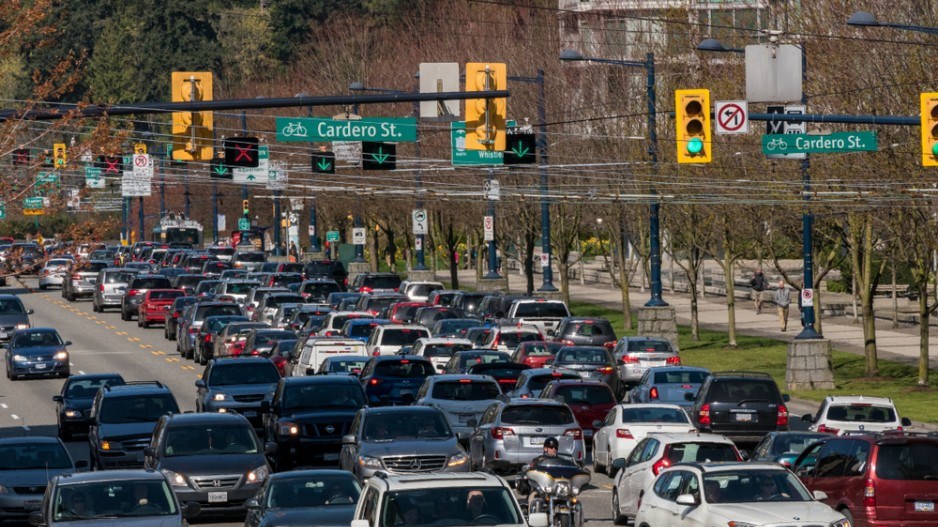The negative health impacts of vehicle emissions on people living near roads needs greater study, says a preliminary study done in Vancouver and Toronto.
“Vehicles emit a complex mixture of air pollutants that can reach wide areas around busy roads,” the University of Toronto study said. “One-third of Canadians live near major roads and are thus potentially exposed to traffic emissions.”
And, it’s not just tailpipe emissions, the study found. “Non-tailpipe emissions of particles from brakes and tires have been rising in Toronto since 2012 and now exceed primary emissions through tailpipes,” the study reported.
Singled out were diesel truck emissions, which represent the major source of key pollutants such as nitrogen oxides and black carbon.
Those emissions can be compounded due to Canada’s cold winters.
“Ultrafine particle concentrations, for example, are higher in winter,” it said. “Nitrogen oxide concentrations are higher on cold winter days, suggesting that the emission control systems for diesel vehicles may not perform well at low temperatures.”
The study said diesel exhaust is a recognized human carcinogen. It noted nitrogen dioxide levels near truck routes exceeded the 2020 annual Canada Ambient Air Quality Standard.
“Significant exposure to diesel emissions can occur and reductions in emissions will be needed in order to achieve the 2020 annual CAAQS [Canadian Ambient Air Quality Standards] for NO2 near roads, especially with substantial diesel traffic.”
The report suggested urban planners consider locating future daycares, schools and retirement homes, away from roads with high heavy truck traffic.
Further, the study found, traffic pollutant concentrations were highest during weekday morning rush hour.
The report said new vehicles are 90% cleaner than their 1970 counterparts and fuels are much cleaner. Further, use of catalytic converters and onboard diagnostics have contributed to more emission efficiency.
However, the number of vehicles continues to rise, with 28% more people entering cities by car over the past 20 years. As of 2017, there were almost 25 million cars and trucks on Canadian roads.
“The types of vehicles are changing as well, as Canadians are buying trucks at a much higher rate than passenger cars,” the study found. “In the past decade, truck sales have risen 20%. Heavier vehicles mean more wear and tear on road surfaces, on tires and brakes, all of which contribute to airborne particles – often metals – in the air.”
Those particles include increasing concentrations of metal dust, including barium and copper, beside roads.
“The rise in more efficient engines has seen a corresponding rise in larger, heavier vehicles, including pick-up trucks and sports utility vehicles,” research found. “Longer term, widespread adoption of electric vehicles, which are heavier than conventional cars, could also increase non-tailpipe emissions.”
@jhainswo




